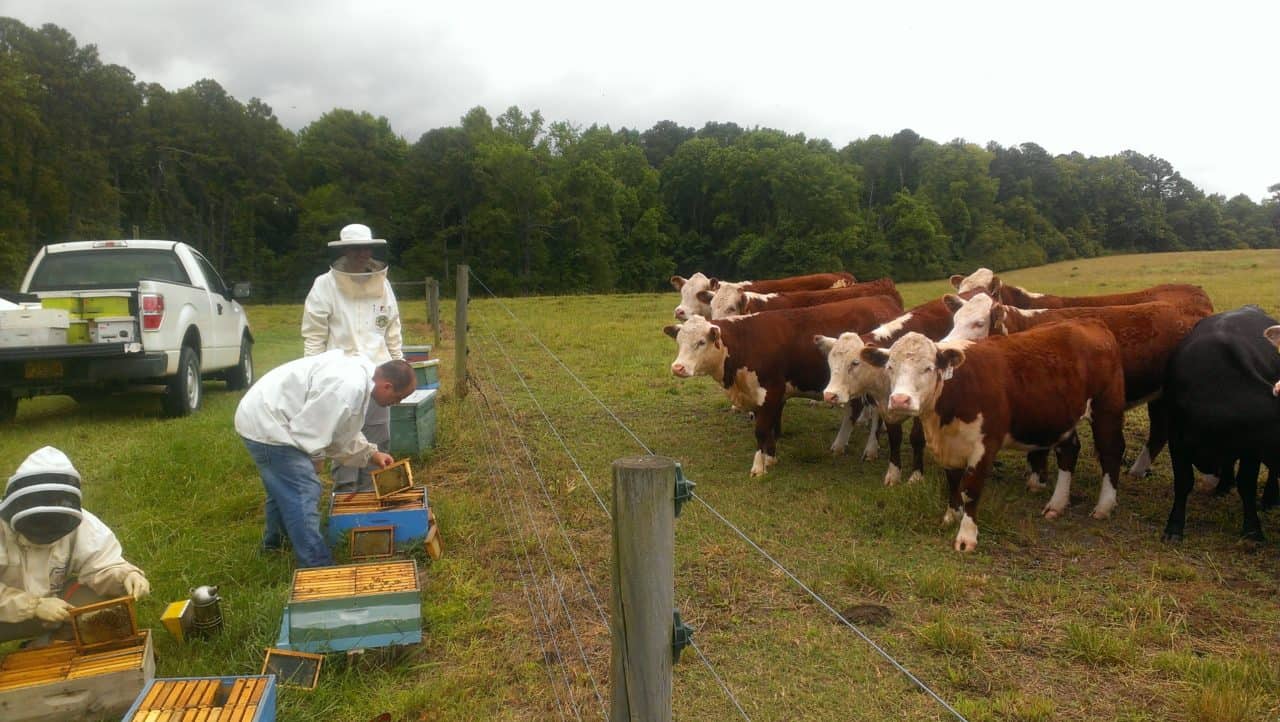Jordan Arata, one of our undergraduates who worked for our lab this summer was ‘stationed’ at the North Carolina State University lab working with Dr. David Tarpy. He details his experiences below. Jordan is also President of the UMD Apiary club.
This summer I had the pleasure of working and learning at David Tarpy’s honey bee research facility at North Carolina State University. There, I worked alongside my friend Sam Freeze to help David Tarpy, Mike Simone-Finstrom, Jennifer Keller, and Ming Huang with various projects and experiments.

One of these experiments investigated virus transmission in raising new queens. This was done by comparing the prevalence of different viruses in grafting source colonies and cell builder colonies to the prevalence of virus in the raised queens to determine which virus prevalence the queens matched, and hence, whether the viruses were transmitted from the grafting source or the cell builders. I also helped with a somewhat similar experiment that examined gut samples across multiple generations of queens and offspring to determine the sources and/or transmission of beneficial micro biome in the bees’ digestive tracts.
Another experiment I helped with examined the effects of genetic diversity on various immunity traits of colonies. These traits included how much tree resin (propolis) the bees gathered, how many different tree resins the bees gathered, hygienic responses including the removal of dead bees and cleaning (themselves and others), individual internal immune responses, and how these responses changed with the introduction of disease.
We used many interesting techniques at the lab for these and other experiments. Many of our experiments required sampling of nurse bees. For this, we would store frames of emerging brood in the incubator overnight, mark the newly emerged bees the next day, and place them back into their hives so that when we sampled in five days, we could easily find five day old bees (most likely nurse bees).
We also needed to limit mating in queens in some experiments. For this, we weighed down virgin queens with magnets (shown to decrease diversity) and limited the length of mating flights and the number to one mating flight. A mating sign is a small white “plug” that contains the drone’s mucus, plus the endophallus and other parts of the male genitalia that can be seen on the queen after she successfully mates.

Photo Credit: Jordan Arata
While at the lab, I was also exposed to “you never know what bees will do”. I had always heard that bees sometimes do weird things without a hint of explanation, yet never truly believed it until I worked at a bee lab. Some of these memorable instances included a colony absconding and trying to move in with an existing colony, and a laying queen flying away while I was inspecting a colony and turning up again two days later.
I am interested to hear if anyone else has seen bees do some weird things. Please share below!
